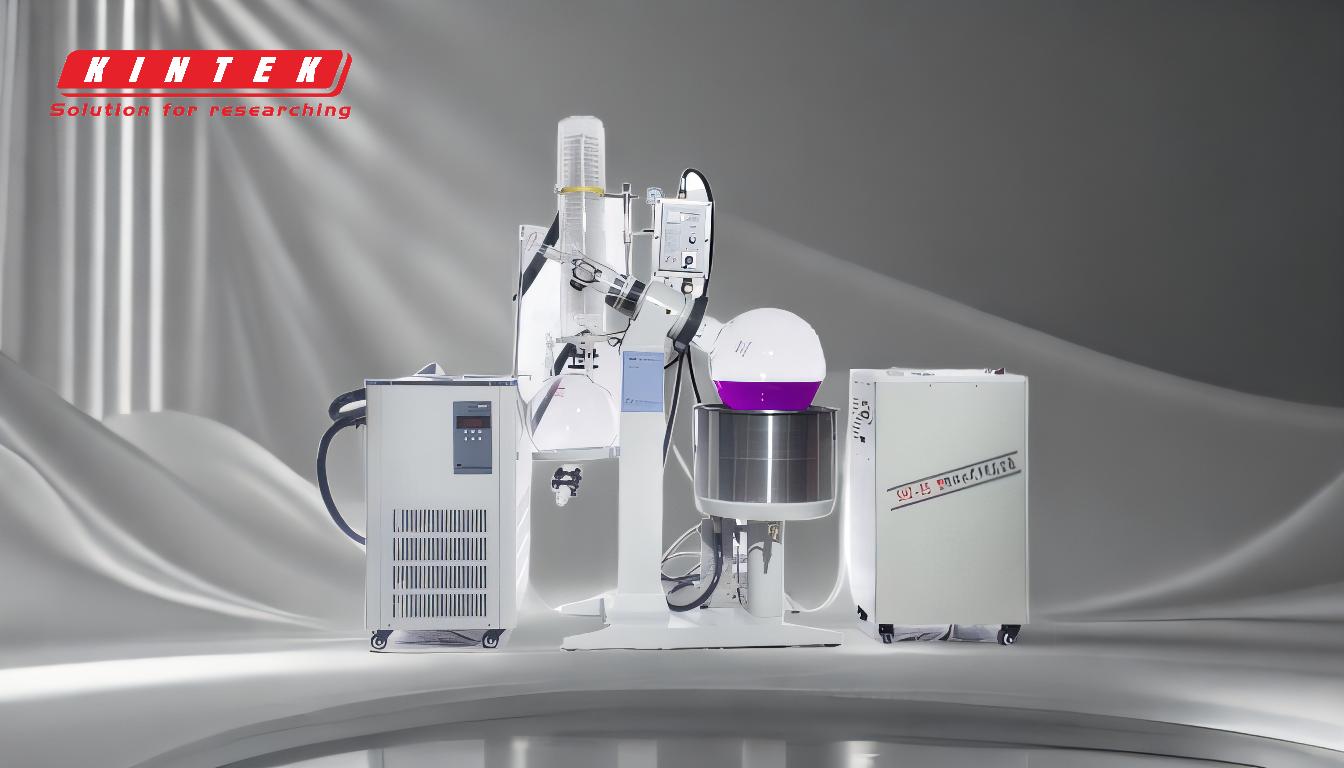Rotary evaporators are designed to speed up solvent evaporation through several key features that work synergistically. These include reduced pressure (vacuum), controlled heating, rotation of the flask, and efficient condensation. By lowering the boiling point of the solvent through vacuum, increasing the surface area via rotation, and applying gentle heat, the evaporation process is significantly accelerated. Additionally, the condenser ensures rapid cooling and collection of the evaporated solvent, further enhancing efficiency. Together, these features make rotary evaporation a faster and more efficient method compared to traditional distillation techniques.
Key Points Explained:

-
Reduced Pressure (Vacuum)
- A vacuum pump reduces the pressure inside the rotary evaporator system, which lowers the boiling point of the solvent.
- This allows solvents to evaporate at lower temperatures, preventing thermal degradation of heat-sensitive materials.
- The vacuum level is controlled to ensure efficient evaporation without overloading the condenser.
- Reference: "The factors that contribute to speeding up evaporation in rotary evaporation include decreased pressure within the system."
-
Rotation of the Flask
- The flask is rotated at speeds up to 280 rpm, creating a thin film of the solvent on the inner wall of the flask.
- This significantly increases the effective surface area for evaporation, speeding up the process.
- Rotation also prevents bumping (sudden boiling) and ensures uniform heating.
- Reference: "A rotary evaporator increases evaporation efficiency by rotating the flask under reduced pressure, creating a large-area film of the material on the flask wall."
-
Controlled Heating
- A water bath or heating element gently heats the solvent, providing the necessary energy for evaporation.
- The temperature is carefully controlled to avoid overheating, which could damage sensitive compounds.
- Heating, combined with reduced pressure, ensures rapid and efficient evaporation.
- Reference: "The factors that contribute to speeding up evaporation in rotary evaporation include increased temperature of the solvent."
-
Efficient Condensation
- The evaporated solvent is rapidly cooled and condensed in a high-efficiency condenser, often using a cold finger with dry ice or a cooling liquid.
- Efficient condensation prevents solvent loss and ensures the process remains continuous and effective.
- Reference: "The solvent vapor is then rapidly cooled by a high-efficiency condenser and collected, accelerating the evaporation rate."
-
System Design and Features
- Rotary evaporators are designed to maximize efficiency, with features like a bump guard to prevent splashing, a vacuum release valve for safety, and time-lapse control for automation.
- The vertical orientation saves bench space, and the ejection systems allow for quick flask removal.
- Reference: "It can accommodate sample sizes of up to 1 litre, is commonly vertically-oriented to save bench-top space, and utilizes efficient flask or vapor tube ejection systems to expedite the process."
By combining these features, rotary evaporators achieve a significant reduction in distillation time, making them indispensable in laboratories for solvent removal and concentration processes.
Summary Table:
| Feature | Function | Benefit |
|---|---|---|
| Reduced Pressure (Vacuum) | Lowers solvent boiling point, enabling evaporation at lower temperatures | Prevents thermal degradation of heat-sensitive materials |
| Rotation of the Flask | Creates a thin solvent film, increasing surface area for evaporation | Speeds up evaporation and ensures uniform heating |
| Controlled Heating | Provides gentle heat to the solvent for evaporation | Prevents overheating and damage to sensitive compounds |
| Efficient Condensation | Rapidly cools and collects evaporated solvent | Ensures continuous and effective solvent recovery |
| System Design | Includes safety features, automation, and space-saving vertical orientation | Enhances efficiency, safety, and ease of use in laboratory settings |
Optimize your lab's solvent evaporation process with rotary evaporators—contact our experts today to learn more!












